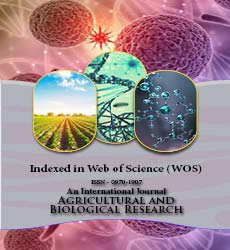Agricultural and Biological Research
RNI # 24/103/2012-R1
Angsuman Das*, Bhabana Das and Jyotishmita Das
This review explores the profound effects of domestication and urbanization on the gut micro-biota of animals. It delves into the complex interplay between these two processes and their transformative impact on the microorganisms residing in the gastrointestinal tracts of a wide range of species. Domestication, the centuries-old practice of taming and breeding animals for human use, has led to significant shifts in the gut micro-biomes of domesticated animals. This shift is a result of altered diets, living conditions, and reduced exposure to natural environments. The paper examines the consequences of these changes on animal health, behavior, and their adaptation to domestic life. Conversely, urbanization, characterized by the rapid expansion of cities and human habitats, has driven wild animals to adapt to urban environments. This review investigates how the urban landscape, pollution, and dietary changes reshape the gut microbiomes of urban wildlife. It explores the potential implications of these alterations on the animals’ resilience to urban stressors and disease. Drawing parallels between domestication and urbanization, the paper reveals intriguing similarities and differences in gut micro-biome transformations across various species. It also assesses the broader implications of these shifts on ecological dynamics, zoonotic disease transmission, and the potential for microbial interactions between domesticated animals, urban wildlife, and humans. Ultimately, this review consolidates current knowledge on the topic, shedding light on the shared mechanisms and unique adaptations that drive microbial changes in animals undergoing domestication and those adapting to urban environments. It concludes with a discussion of the implications for animal conservation, animal-human interactions, and the one health perspective, emphasizing the importance of understanding these intricate microbial relationships in our ever-changing world. By enhancing our comprehension of these complex dynamics, this paper contributes to the growing body of knowledge that informs our coexistence with the animals we share our lives and cities with, highlighting the critical role of gut microbiota in these processes.
